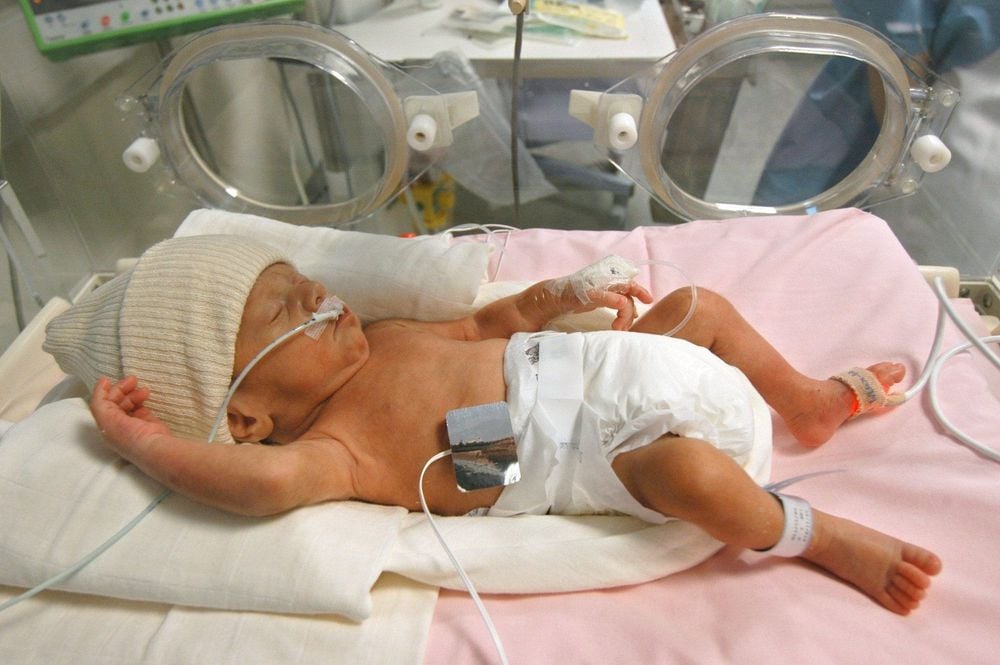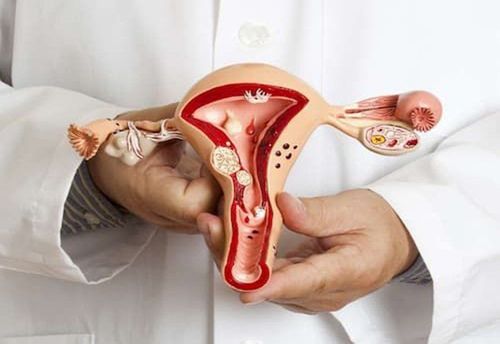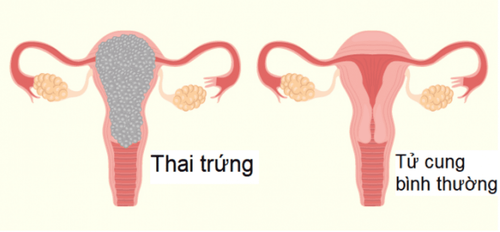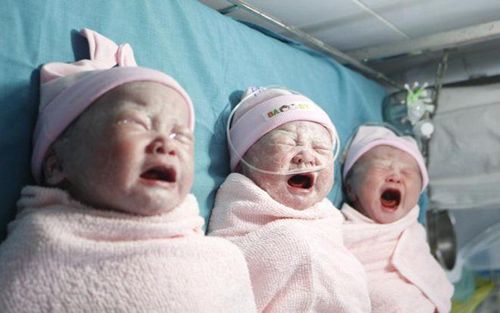This is an automatically translated article.
The article was professionally consulted by Specialist Doctor I Le Thi Phuong - Obstetrician and Gynecologist - Department of Obstetrics and Gynecology - Vinmec Ha Long International HospitalEndometriosis is a common disease in women, affecting fertility, increasing the risk of miscarriage, especially in the first 3 months of pregnancy.
1. What is endometriosis?
Endometriosis is the term used to describe the growth of endometrial tissue that originates from the uterus outside of the uterus. Endometriosis is most commonly seen appearing on both sides of the ovaries, fallopian tubes; More rarely, endometriosis can extend beyond the viscera of the pelvic region.When the reproductive organs are affected by endometriosis, they can become damaged, irritated, or mechanically obstructed, making conception and pregnancy more difficult.
One study showed that when couples actively want to get pregnant, the monthly success rate is 15 to 20%, but for couples affected by endometriosis, the rate drops. from 2 to 10%.
2. Endometriosis and pregnancy process
During pregnancy, the patient will temporarily no longer have a menstrual cycle, from which the symptoms of endometriosis often decrease or disappear (such as pain, heavy bleeding,...). However, this is not true for all pregnant women, because for some, the symptoms may not improve at all, sometimes even worse. It all depends on the individual, on the degree of hormonal changes and on the body's response to pregnancy.Endometriosis can increase the risk of pregnancy and delivery complications, including miscarriage, preterm delivery, and placenta previa.

2.1 Endometriosis and risk of miscarriage
There are some studies that have shown a higher chance of miscarriage in pregnant women with endometriosis than in normal pregnant women, including those with only mild endometriosis.A retrospective analysis concluded that women with endometriosis during pregnancy had a miscarriage rate of 35.8%, compared with normal women, the miscarriage rate was only 22%.
There is no single method that a doctor or patient can use to prevent a miscarriage once it has happened, but it is important to know the signs and symptoms of a miscarriage to seek help. timely medical and psychological help, supporting the best recovery process.
If a woman is less than 12 weeks pregnant, the signs of a suspected miscarriage are similar to those of a woman's period:
Bleeding Abdominal pain Lower back pain Sometimes a woman may notice pieces of tissue. is exported.
For pregnancy over 12 weeks, the symptoms are similar to the above, but their severity will be more severe.
2.2. Endometriosis and the risk of preterm birth
Statistics of some studies show that the risk of giving birth before 37 weeks of pregnancy in pregnant women with endometriosis is 1.5 times higher than in other normal pregnant women. Giving birth before the 37th week of pregnancy is defined as a premature birth.Babies born prematurely tend to have low birth weight and are more prone to health and development problems. Warning signs and symptoms of preterm labor and delivery include:
Frequent uterine contractions. Pregnant women may or may not feel pain. Vaginal discharge changes, there may be blood mixed in the discharge, or the discharge becomes thick like pus. Feel increased pressure in the pelvic area. If you experience any of these symptoms, see your doctor immediately for prompt treatment.
2.3 Endometriosis and risk of placenta previa
The placenta is an organ associated with pregnancy. The main function of the placenta is to provide oxygen and nutrients to the developing fetus. The normal position of the placenta is at the top or on the side of the uterus. In some pregnant women, the placenta attaches to the lower part of the cervix, causing a condition called placenta previa.Placenta praevia increases the risk of placental abruption early in labor, which in turn causes serious and life-threatening bleeding for both mother and fetus.
Pregnant women with endometriosis have a higher risk of developing placenta previa. The main symptom of placenta previa is vaginal bleeding (bright red blood). If the bleeding is too heavy, you may need an emergency caesarean.
3. Management of endometriosis in pregnant women
Hormonal therapy and surgical intervention are not usually indicated for pregnant women with endometriosis. Pain relievers will work to reduce discomfort, but your doctor will prescribe a safe drug, at a dose that is safe for the fetus.Some other self-care measures that may be effective include:
Take a warm bath. Eating foods rich in fiber helps reduce the risk of constipation. Go for a light walk or do appropriate exercises to stretch your back muscles, thereby reducing the symptoms of back pain associated with endometriosis.

Please dial HOTLINE for more information or register for an appointment HERE. Download MyVinmec app to make appointments faster and to manage your bookings easily.
Article referenced source: healthline.com













